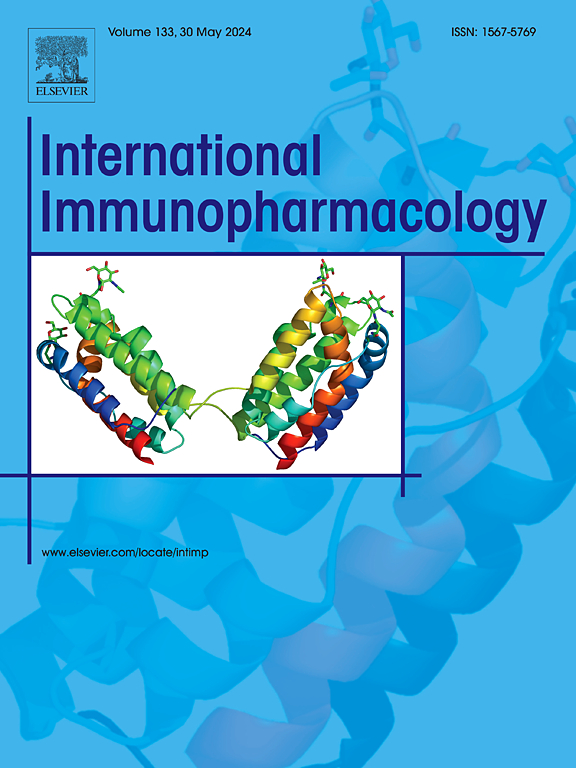Dynamic assessment of myelofibrosis progression in myeloproliferative neoplasm mouse model using a minimally invasive evaluation system
IF 4.8
2区 医学
Q2 IMMUNOLOGY
引用次数: 0
Abstract
Myelofibrosis (MF) is the most common complication of myeloproliferative neoplasms (MPNs),which is markedly correlated with a dismal prognosis. Murine model such as the thrombopoietin receptor (MPL)W515L-mutant MPN mouse model functions as a crucial vehicle in disease research, is widely used in basic and applied research on MPNs and MF.However, the lack of methods for dynamic observation of MF progression hinders mechanistic studies and drug development for MF.
Here we develop a sensitive, stable and minimally invasive MPN evaluation system to assess the evolution of myelofibrosis in murine model.Key peripheral blood parameters (WBC, RBC, HGB, HCT, PLT, and tumor cell proportion) from MPN mice were analyzed using PCA to reduce dimensionality and generate a comprehensive evaluation score (Y). Based on peripheral blood smear observations and predefined score cut-off values (0.59 and − 0.44), MPN was classified into mild, moderate, and severe stages. Validation conducted across diverse experimental settings yielded outcomes that were in alignment with the pathological grading of myelofibrosis. This system facilitated the dynamic monitoring of MF progression in applied research on pigment epithelium-derived factor treatment for MPN and basic studies on the role of NLRP inflammasomes in the bone marrow microenvironment.
We believed that this minimally invasive evaluation system for grading MF severity in MPN mouse model will provide a potential tool for MPN pathogenesis research and targeted therapy development.
求助全文
约1分钟内获得全文
求助全文
来源期刊
CiteScore
8.40
自引率
3.60%
发文量
935
审稿时长
53 days
期刊介绍:
International Immunopharmacology is the primary vehicle for the publication of original research papers pertinent to the overlapping areas of immunology, pharmacology, cytokine biology, immunotherapy, immunopathology and immunotoxicology. Review articles that encompass these subjects are also welcome.
The subject material appropriate for submission includes:
• Clinical studies employing immunotherapy of any type including the use of: bacterial and chemical agents; thymic hormones, interferon, lymphokines, etc., in transplantation and diseases such as cancer, immunodeficiency, chronic infection and allergic, inflammatory or autoimmune disorders.
• Studies on the mechanisms of action of these agents for specific parameters of immune competence as well as the overall clinical state.
• Pre-clinical animal studies and in vitro studies on mechanisms of action with immunopotentiators, immunomodulators, immunoadjuvants and other pharmacological agents active on cells participating in immune or allergic responses.
• Pharmacological compounds, microbial products and toxicological agents that affect the lymphoid system, and their mechanisms of action.
• Agents that activate genes or modify transcription and translation within the immune response.
• Substances activated, generated, or released through immunologic or related pathways that are pharmacologically active.
• Production, function and regulation of cytokines and their receptors.
• Classical pharmacological studies on the effects of chemokines and bioactive factors released during immunological reactions.

 求助内容:
求助内容: 应助结果提醒方式:
应助结果提醒方式:


